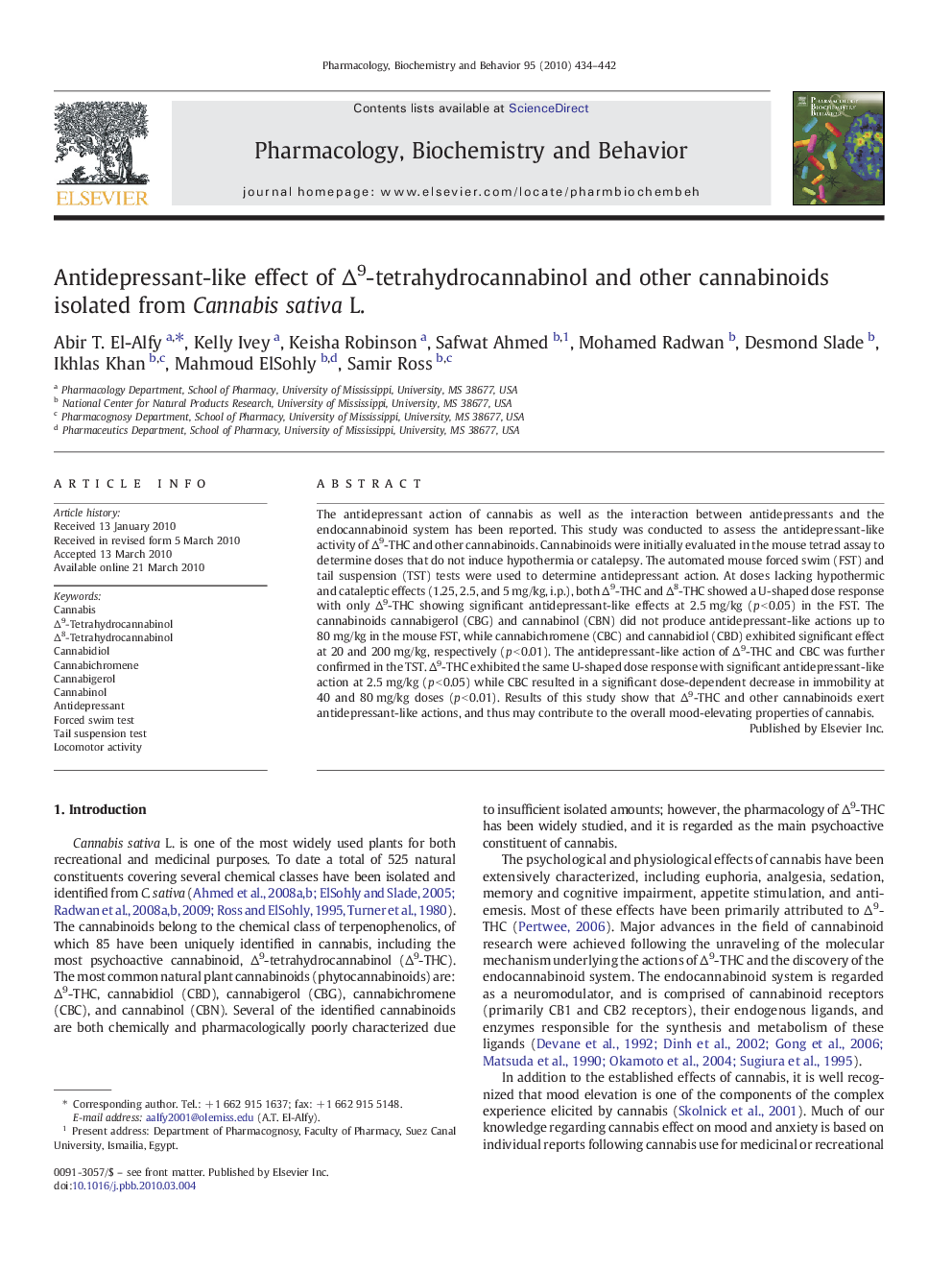| Article ID | Journal | Published Year | Pages | File Type |
|---|---|---|---|---|
| 2013131 | Pharmacology Biochemistry and Behavior | 2010 | 9 Pages |
The antidepressant action of cannabis as well as the interaction between antidepressants and the endocannabinoid system has been reported. This study was conducted to assess the antidepressant-like activity of ∆9-THC and other cannabinoids. Cannabinoids were initially evaluated in the mouse tetrad assay to determine doses that do not induce hypothermia or catalepsy. The automated mouse forced swim (FST) and tail suspension (TST) tests were used to determine antidepressant action. At doses lacking hypothermic and cataleptic effects (1.25, 2.5, and 5 mg/kg, i.p.), both ∆9-THC and ∆8-THC showed a U-shaped dose response with only ∆9-THC showing significant antidepressant-like effects at 2.5 mg/kg (p < 0.05) in the FST. The cannabinoids cannabigerol (CBG) and cannabinol (CBN) did not produce antidepressant-like actions up to 80 mg/kg in the mouse FST, while cannabichromene (CBC) and cannabidiol (CBD) exhibited significant effect at 20 and 200 mg/kg, respectively (p < 0.01). The antidepressant-like action of ∆9-THC and CBC was further confirmed in the TST. ∆9-THC exhibited the same U-shaped dose response with significant antidepressant-like action at 2.5 mg/kg (p < 0.05) while CBC resulted in a significant dose-dependent decrease in immobility at 40 and 80 mg/kg doses (p < 0.01). Results of this study show that ∆9-THC and other cannabinoids exert antidepressant-like actions, and thus may contribute to the overall mood-elevating properties of cannabis.
